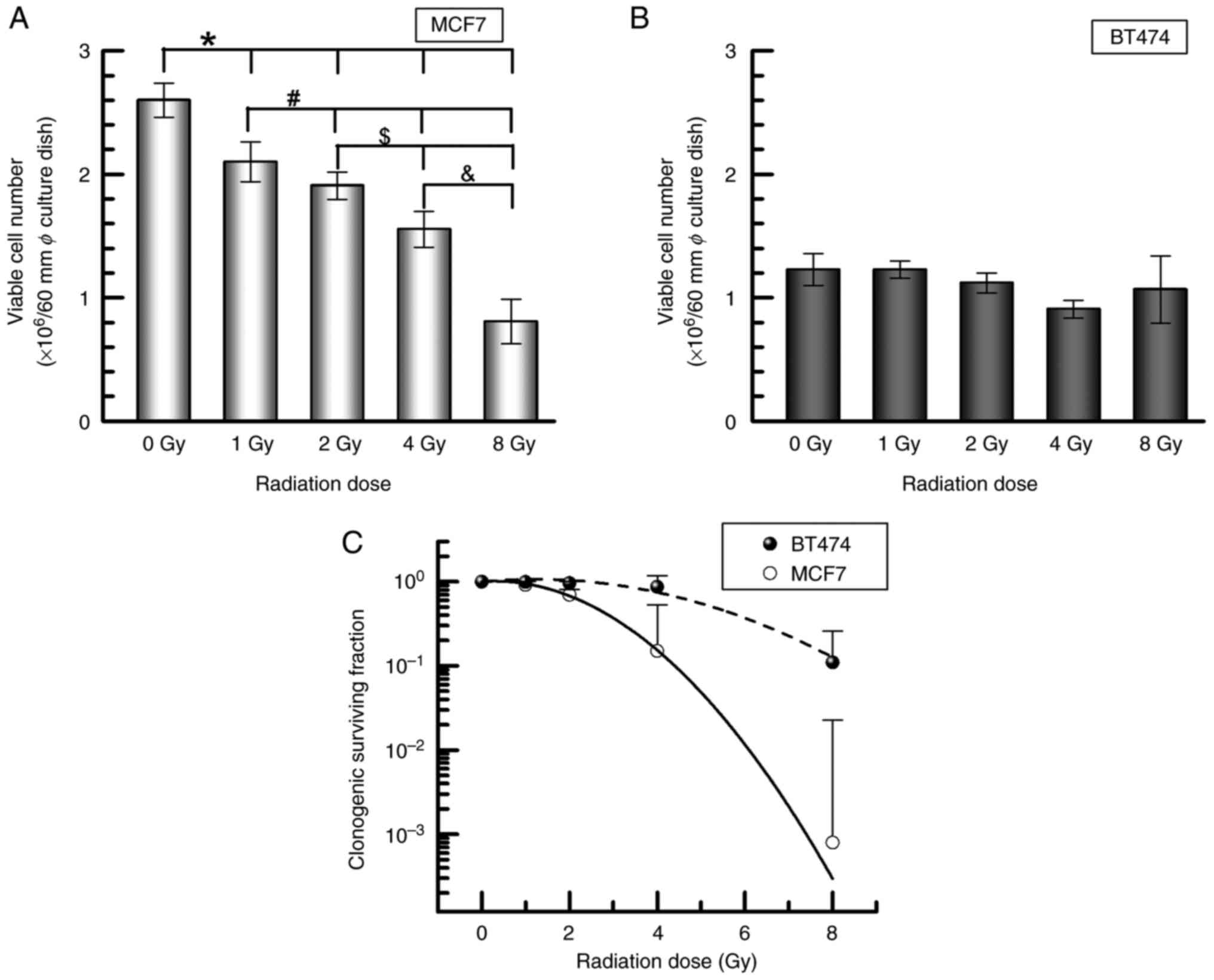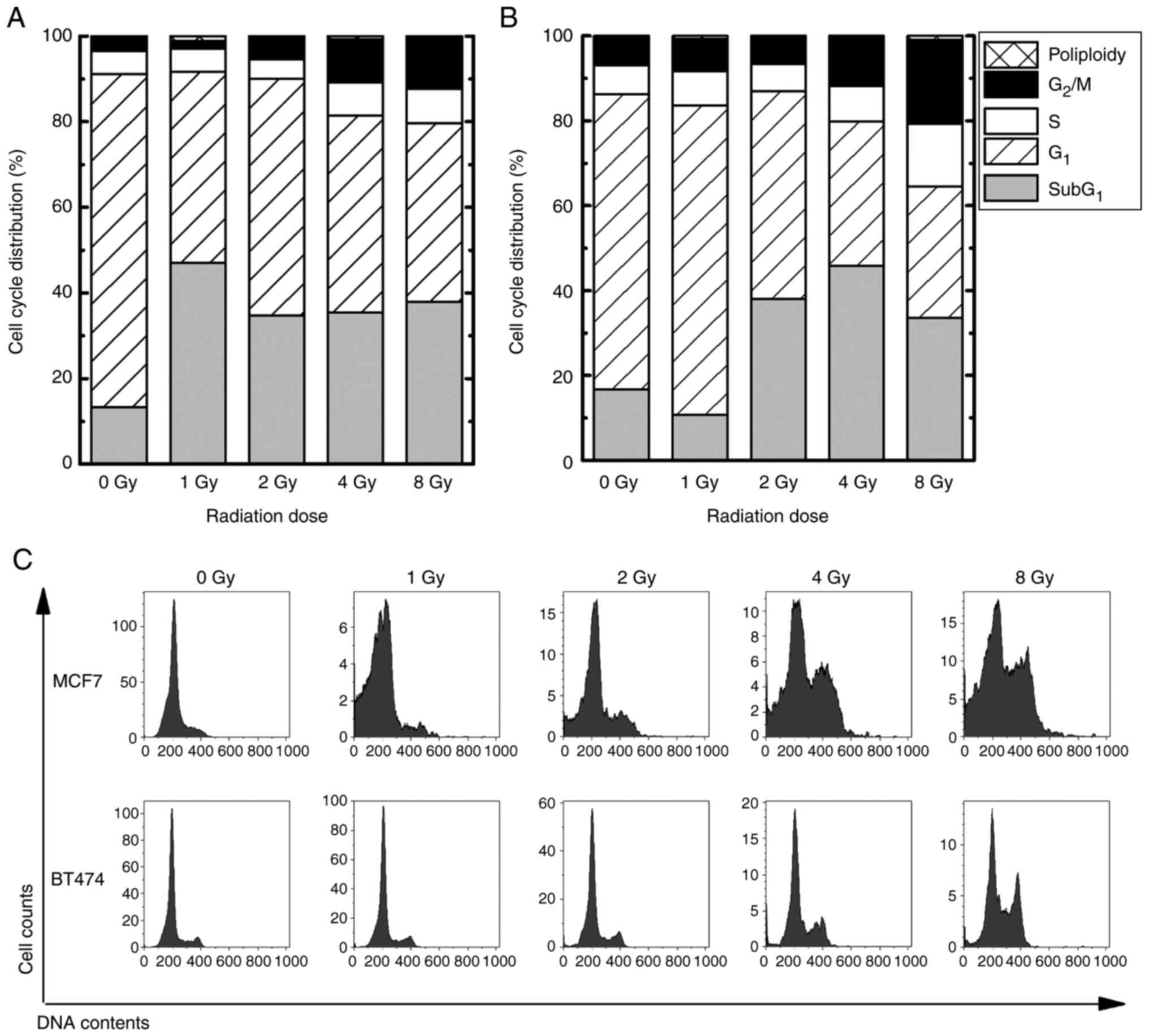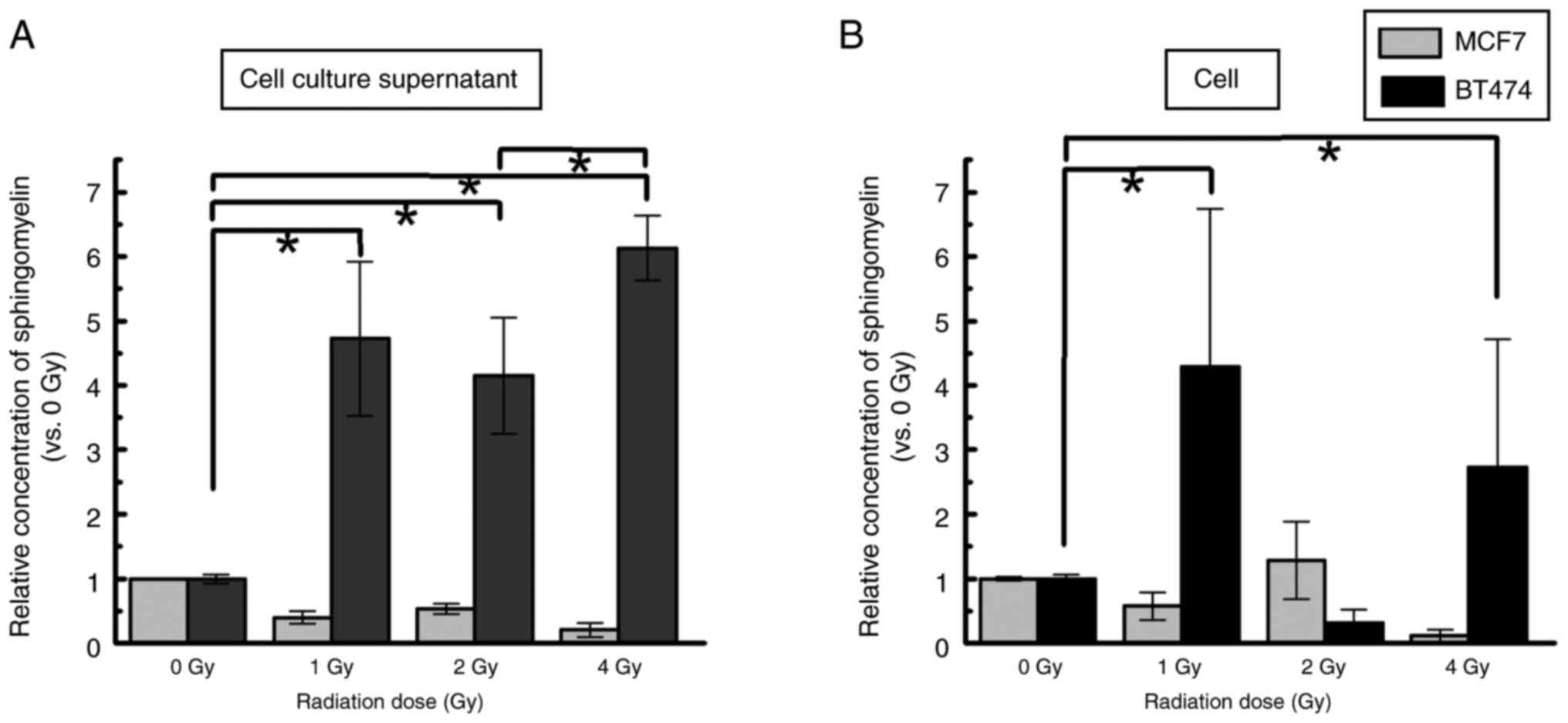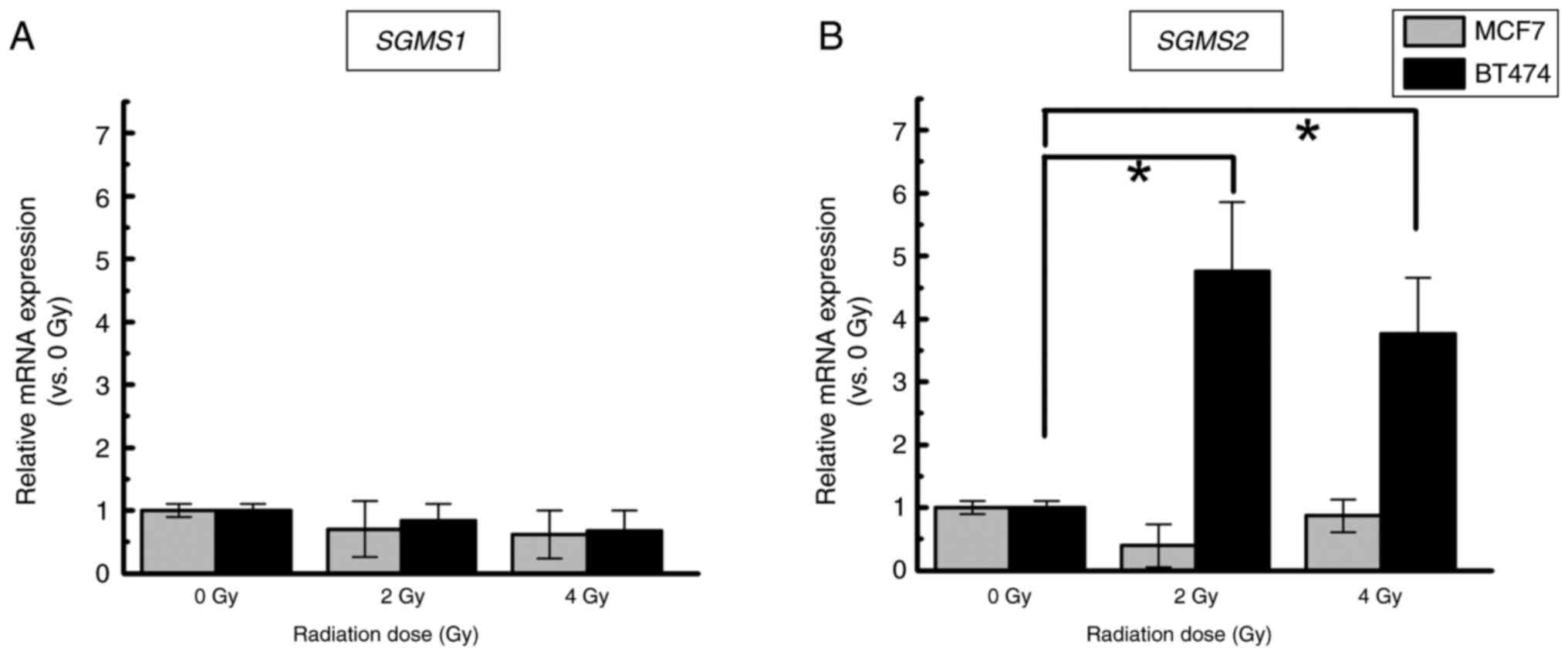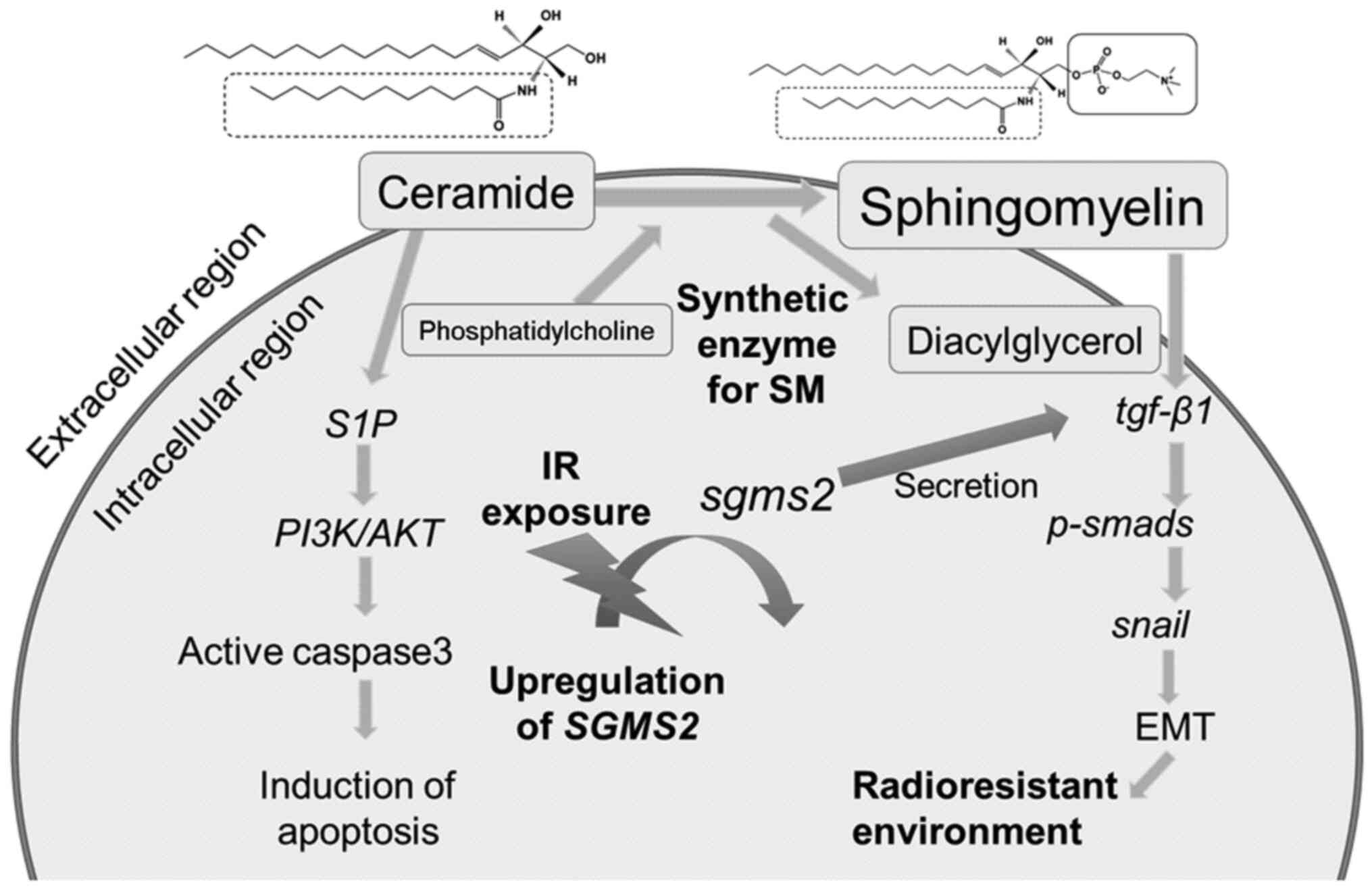|
1
|
International Agency for Research on
Cancer, . Cancer Today- Age-Standardized Rate (World) per 100 000,
Incidence, Both sexes, in 2022. https://gco.iarc.fr/today/en/dataviz/bars?mode=cancer&group_populations=1July
27–2024
|
|
2
|
Sung H, Ferlay J, Siegel RL, Laversanne M,
Soerjomataram I, Jemal A and Bray F: Global cancer statistics 2020:
GLOBOCAN estimates of incidence and mortality worldwide for 36
cancers in 185 countries. CA Cancer J Clin. 71:209–249. 2021.
View Article : Google Scholar : PubMed/NCBI
|
|
3
|
Siegel RL, Miller KD, Wagle NS and Jemal
A: Cancer statistics, 2023. CA Cancer J Clin. 73:17–48. 2023.
View Article : Google Scholar : PubMed/NCBI
|
|
4
|
Cancer Registry and Statistics, . Cancer
Information Service, National Cancer Center, Japan. (Survival).
https://ganjoho.jp/en/professional/statistics/table_download.htmlJanuary
15–2024
|
|
5
|
Shaath H, Elango R and Alajez NM:
Molecular classification of breast cancer utilizing long non-coding
RNA (lncRNA) transcriptomes identifies novel diagnostic lncRNA
panel for triple-negative breast cancer. Cancers (Basel).
13:53502021. View Article : Google Scholar : PubMed/NCBI
|
|
6
|
Vaz-Luis I, Winer EP and Lin NU: Human
epidermal growth factor receptor-2-positive breast cancer: Does
estrogen receptor status define two distinct subtypes? Ann Oncol.
24:283–291. 2013. View Article : Google Scholar : PubMed/NCBI
|
|
7
|
Iqbal N and Iqbal N: Human epidermal
growth factor receptor 2 (HER2) in cancers: Overexpression and
therapeutic implications. Mol Biol Int. 2014:8527482014. View Article : Google Scholar : PubMed/NCBI
|
|
8
|
National Center for Biotechnology
Information, . ERBB2 erb-b2 receptor tyrosine kinase 2 [Homo
sapiens (human)] Gene ID: 2064. January 15–2023
|
|
9
|
Monzen S, Tatara Y, Mariya Y, Chiba M,
Wojcik A and Lundholm L: HER2-positive breast cancer that resists
therapeutic drugs and ionizing radiation releases
sphingomyelin-based molecules to circulating blood serum. Mol Clin
Oncol. 13:702020. View Article : Google Scholar : PubMed/NCBI
|
|
10
|
Bataller M, Sánchez-García A, Garcia-Mayea
Y, Mir C, Rodriguez I and Lleonart ME: The role of sphingolipids
metabolism in cancer drug resistance. Front Oncol. 11:8076362021.
View Article : Google Scholar : PubMed/NCBI
|
|
11
|
Yuan JS, Wang D and Stewart CN Jr:
Statistical methods for efficiency adjusted real-time PCR
quantification. Biotechnol J. 3:112–123. 2008. View Article : Google Scholar : PubMed/NCBI
|
|
12
|
Livak KJ and Schmittgen TD: Analysis of
relative gene expression data using real-time quantitative PCR and
the 2(−Delta Delta C(T)) method. Methods. 25:402–408. 2001.
View Article : Google Scholar : PubMed/NCBI
|
|
13
|
Untergasser A, Cutcutache I, Koressaar T,
Ye J, Faircloth BC, Remm M and Rozen SG: Primer3-new capabilities
and interfaces. Nucleic Acids Res. 40:e1152012. View Article : Google Scholar : PubMed/NCBI
|
|
14
|
Hall EJ: Radiobiology for the Radiologist.
5th edition. Lippincott Williams and Wilkins; Philadelphia, PA: pp.
136–143. 2000
|
|
15
|
Matt S and Hofmann TG: The DNA
damage-induced cell death response: A roadmap to kill cancer cells.
Cell Mol Life Sci. 73:2829–2850. 2016. View Article : Google Scholar : PubMed/NCBI
|
|
16
|
Maragheh BFA, Fatourachi P, Mohammadi SM,
Valipour B, Behtari M, Dehnad A and Charoudeh HN: Streptomyces
levis ABRIINW111 Inhibits SW480 cells growth by apoptosis
induction. Adv Pharm Bull. 8:675–682. 2018. View Article : Google Scholar : PubMed/NCBI
|
|
17
|
Holloway RW and Marignani PA: Targeting
mTOR and glycolysis in HER2-positive breast cancer. Cancers
(Basel). 13:29222021. View Article : Google Scholar : PubMed/NCBI
|
|
18
|
Duru N, Fan M, Candas D, Menaa C, Liu HC,
Nantajit D, Wen Y, Xiao K, Eldridge A, Chromy BA, et al:
HER2-associated radioresistance of breast cancer stem cells
isolated from HER2-negative breast cancer cells. Clin Cancer Res.
18:6634–6647. 2012. View Article : Google Scholar : PubMed/NCBI
|
|
19
|
Hou J, Zhou Z, Chen X, Zhao R, Yang Z, Wei
N, Ni Q, Feng Y, Yu X, Ma J and Guo X: HER2 reduces breast cancer
radiosensitivity by activating focal adhesion kinase in vitro and
in vivo. Oncotarget. 7:45186–45198. 2016. View Article : Google Scholar : PubMed/NCBI
|
|
20
|
Candas-Green D, Xie B, Huang J, Fan M,
Wang A, Menaa C, Zhang Y, Zhang L, Jing D, Azghadi S, et al: Dual
blockade of CD47 and HER2 eliminates radioresistant breast cancer
cells. Nat Commun. 11:45912020. View Article : Google Scholar : PubMed/NCBI
|
|
21
|
Gray M, Turnbull AK, Ward C, Meehan J,
Martínez-Pérez C, Bonello M, Pang LY, Langdon SP, Kunkler IH,
Murray A and Argyle D: Development and characterisation of acquired
radioresistant breast cancer cell lines. Radiat Oncol. 14:642019.
View Article : Google Scholar : PubMed/NCBI
|
|
22
|
Cao N, Li S, Wang Z, Ahmed KM, Degnan ME,
Fan M, Dynlacht JR and Li JJ: NF-kappaB-mediated HER2
overexpression in radiation-adaptive resistance. Radiat Res.
171:9–21. 2009. View
Article : Google Scholar : PubMed/NCBI
|
|
23
|
Duru N, Candas D, Jiang G and Li JJ:
Breast cancer adaptive resistance: HER2 and cancer stem cell
repopulation in a heterogeneous tumor society. J Cancer Res Clin
Oncol. 140:1–14. 2014. View Article : Google Scholar : PubMed/NCBI
|
|
24
|
No M, Choi EJ and Kim IA: Targeting HER2
signaling pathway for radiosensitization: Alternative strategy for
therapeutic resistance. Cancer Biol Ther. 8:2351–2361. 2009.
View Article : Google Scholar : PubMed/NCBI
|
|
25
|
Slotte JP: Biological functions of
sphingomyelins. Prog Lipid Res. 52:424–437. 2013. View Article : Google Scholar : PubMed/NCBI
|
|
26
|
Bilal F, Montfort A, Gilhodes J, Garcia V,
Riond J, Carpentier S, Filleron T, Colacios C, Levade T, Daher A,
et al: Sphingomyelin synthase 1 (SMS1) downregulation is associated
with sphingolipid reprogramming and a worse prognosis in melanoma.
Front Pharmacol. 10:4432019. View Article : Google Scholar : PubMed/NCBI
|
|
27
|
Zheng K, Chen Z, Feng H, Chen Y, Zhang C,
Yu J, Luo Y, Zhao L, Jiang X and Shi F: Sphingomyelin synthase 2
promotes an aggressive breast cancer phenotype by disrupting the
homoeostasis of ceramide and sphingomyelin. Cell Death Dis.
10:1572019. View Article : Google Scholar : PubMed/NCBI
|
|
28
|
Park J, Choi J, Cho I and Sheen YY:
Radiotherapy-induced oxidative stress and fibrosis in breast cancer
are suppressed by vactosertib, a novel, orally bioavailable
TGF-β/ALK5 inhibitor. Sci Rep. 12:161042022. View Article : Google Scholar : PubMed/NCBI
|
|
29
|
Long X, Liu X, Deng T, Chen J, Lan J,
Zhang S, Zhou M, Guo D and Zhou J: LARP6 suppresses colorectal
cancer progression through ZNF267/SGMS2-mediated imbalance of
sphingomyelin synthesis. J Exp Clin Cancer Res. 42:332023.
View Article : Google Scholar : PubMed/NCBI
|
|
30
|
Kozar N, Kruusmaa K, Bitenc M, Argamasilla
R, Adsuar A, Goswami N, Arko D and Takač I: Data on metabolomic
profiling of ovarian cancer patients' serum for potential
diagnostic biomarkers. Data Brief. 18:1825–1831. 2018. View Article : Google Scholar : PubMed/NCBI
|



